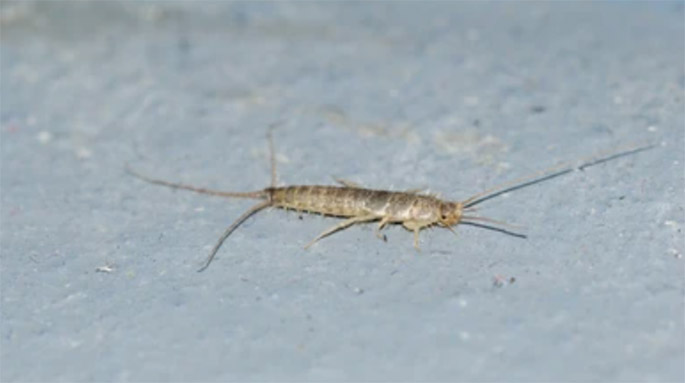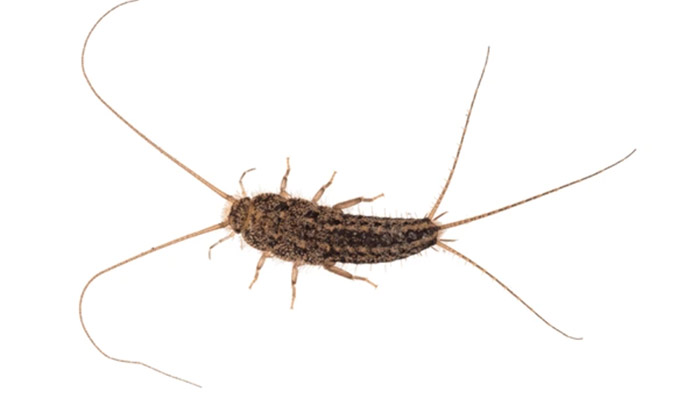Silverfish Control
GET A FAST QUOTE NOW

GET A FAST QUOTE NOW
Over 40,000 properties inspected
Environmentally friendly treatments
12-month warranty
A silverfish infestation can be difficult to notice as they are nocturnal creatures and move very quickly. These small, soft, wingless insects like to feed on dried meat, flour, starch, paper, gum, glue, cotton, linen, rayon, silk, sugar, and breakfast cereals. They seek out dark and damp environments such as dark cupboards and basements. These pests thrive in warmer temperatures and will make their way into heated indoor spaces during winter so that they can set up their colonies and once inside, they reproduce quickly.
Although they are not harmful to human beings as they don’t carry diseases, they will destroy your favourite items of clothing and books.
They can enter homes through cracks and crevices, often hitchhiking on the backs of items brought inside the home.
Did you know?
Silverfish are one of the most primitive insects, and have been crawling around the planet for over 100 millions years! When the female reaches adulthood, she lay eggs every day up to three times per day in crevices and cracks around your home. These eggs hatch within three weeks and grow into adult stage within four weeks.
With environmentally friendly solutions that are both human and pet friendly, our qualified technicians will identify the extent of the silverfish infestation and recommend a suitable treatment plan. Using the latest techniques, we pride ourselves on doing the job right the first time, and we don’t stop until the silverfish nests and pests are removed!
Silverfish removal treatment includes:
Insecticide dust to roof void and subfloor area (if the house is on a slab wall cavities will be dusted)
External spray to house walls, window frames, eave line, garden beds up to 1m from house, fencing and clotheslines
Identifying internal crack, crevice, and harbourage areas
Internal skirting spray
Why choose Pest Police to eradicate pests from your home?
Pest Police has been trusted by thousands of happy clients in Melbourne for being on-time, effective and reliable. We’re a family-run business looking after family homes. We respond promptly to urgent enquiries especially those related to bees and wasps where children or people with health issues are concerned. You’ll have direct contact with our expert technicians backed up by our warranties and 100% success rate. Pest Police use only environmentally friendly products and humane processes to remove pests.
Since silverfish are nocturnal, it can be challenging to spot them, but even one living silverfish is a good sign that you have an infestation happening somewhere in the house. Here are typical signs of a silverfish infestation.
How to prevent a silverfish infestation
To avoid future silverfish infestations in your home, follow these tips:
If you suspect you have a silverfish infestation, call Pest Police and we will swiftly assess the extent of the infestation and provide same day advice on what you can do. With a 100% success rate, silverfish be gone!
Common Silverfish (Lepisma saccharinum)
This is the most widespread species of silverfish in Melbourne and often referred to as bristletails or paper fish. They have a slender, silver-grey body and are typically found in damp, dark areas such as bathrooms, basements, and kitchens. They like to feed on paper, cardboard, and other starchy materials like books, glue, and fabrics.

Gray Silverfish (Ctenolepisma longicaudata)
Slightly larger and darker than the common silverfish, gray silverfish are often found in similar environments. They have a more robust body and can also be found in attics, roof spaces, and behind walls.

Four-Lined Silverfish (Ctenolepisma lineata)
This species is less common but still present in Melbourne. They have four dark lines running along their bodies and are typically found in drier areas of the home, such as attics and storage areas.

We’re as easy to reach as we are to deal with! Complete the online enquiry form or call us
on 1800 737 876.
Talk to us about booking a pest inspection for ants and spiders and receive 50% for rats
and mice at the same time!
SUBURBS NEAR US
While we cater Melbourne wide with no premium fee, below are suburbs near us.
CLIENTS FEEDBACK